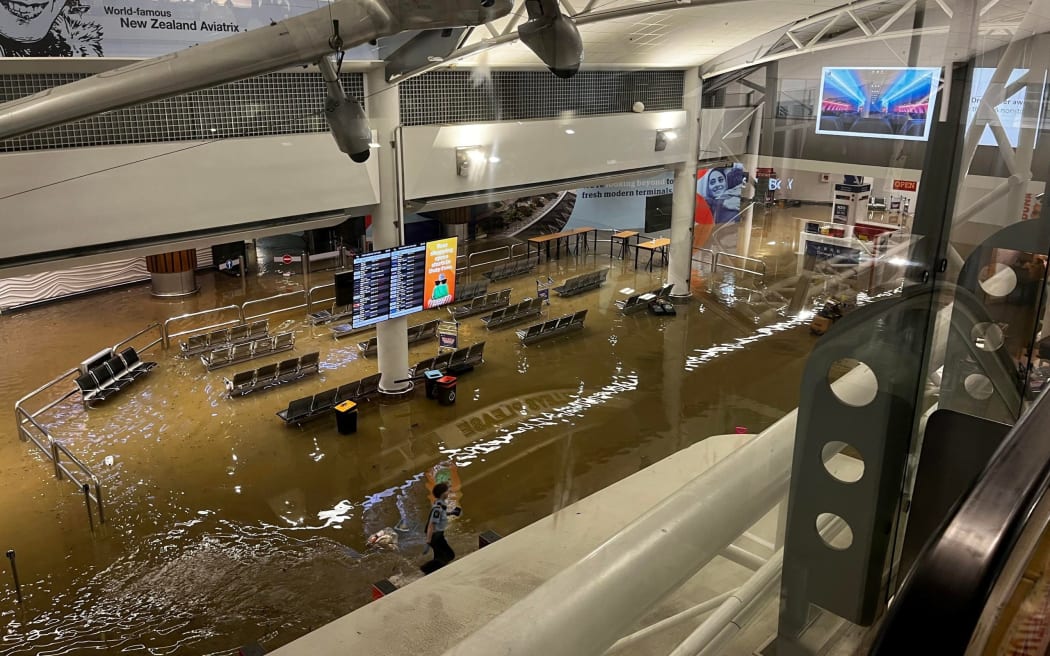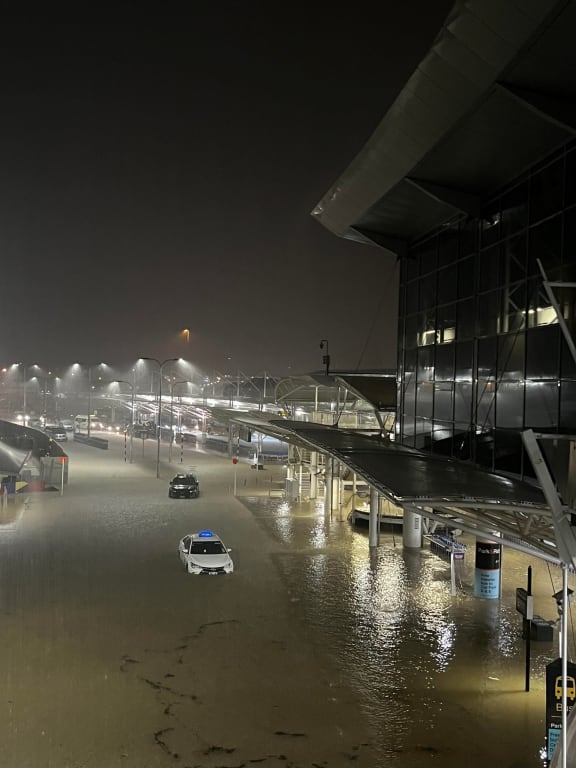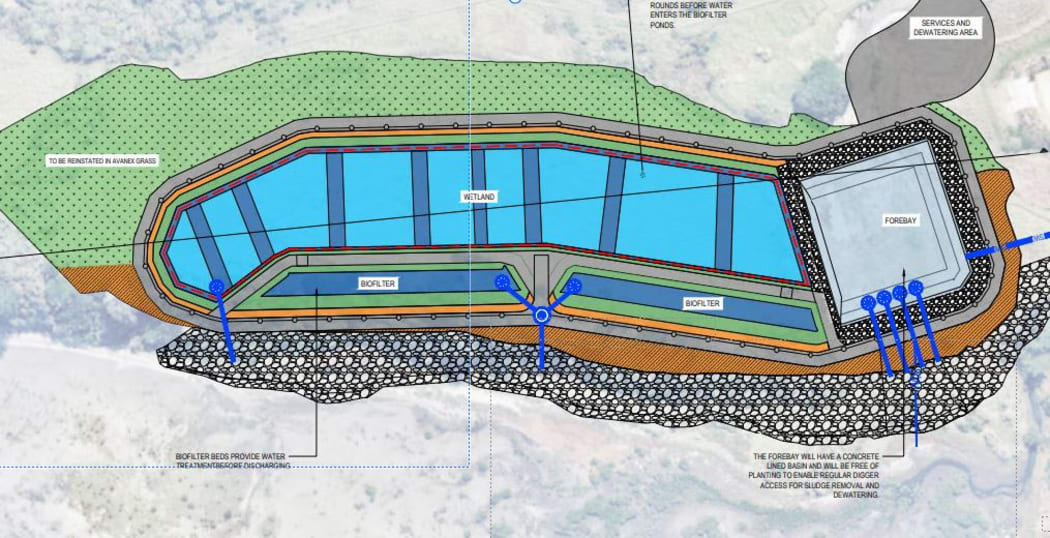
Flooding at the international terminal.
Photo: SUPPLIED
After significant flooding at Auckland Airport during the Auckland Anniversary floods, steps are being taken to ensure it does not happen again.
Photos and videos showing the floods at parts of the airport were beamed around the world last January, including passengers wading through water.
At that time, stranded passengers described the international airport as a “war zone” and “zombie land”, with flights canceled and more than 1000 displaced people and staff walking around or sleeping on the floor.
The airport’s sustainability manager Ellie Callard said they had learned from the flooding, and were taking steps to reduce the impact of future extreme events.

Addressing the Manukau Harbor Forum, Callard said with development plans in place for the coming decade, the airport wanted to be a better neighbor to the harbor and environment.
“The floods showed us we had to do better, and we have been working on what that means,” Callard said.

Flooding outside of the airport.
Photo: SUPPLIED
“Airports by their nature are places with a lot of concrete, runways and buildings.
“But Auckland Airport also makes a huge investment in stormwater and we want to do it well.”
The airport was investing in world-leading technology designed to improve catchment, filtration and water quality discharge, she said.
“We are more than just runways and terminals. We are a major landowner with about 20,000 people working on our sites every day.
“We are aware of our impact on the environment, and it’s influencing development.”
The airport was bringing the domestic and international terminals together, and developing more hard stands for aircraft, “something we wanted to offset in a smarter way than ever before”.
The airport plans to use bio-filtering technology and improved wetland management techniques that will capture, retain and treat storm water on site in a first for New Zealand.
She acknowledged one of the problems wetlands brought was bird life – something which posed an aviation risk.
“Today we can harness knowledge that allows us to attract birds to areas we want them in, but which will keep them away from runways.
“Our longer-term objective is to renew all our stormwater ponds to the latest standards.”
The airport was also working to restore contaminated land, historically used for fire fighting training, and was working with iwi and community groups on coastal and community clean-ups, planting programs and wildlife protection.

Planned filtering systems to help clean stormwater run-off.
Photo: SUPPLIED
“It’s a case of don’t just do what’s required. We want to go beyond that so we can improve the outcomes for people and nature.”
The airport’s plans to improve the environmental impacts on the Manukau were welcomed by the forum.
Chairperson Jon Turner said it was fantastic to see the airport stepping up.
“What’s welcome is hearing Auckland Airport wants to take more responsibility for the environment,” Turner said.
“It remains committed to sustainability, where it already has a record of progress in emissions reductions, energy savings and waste management.
“The Manukau needs all the help it can get.”
The Manukau Harbor Forum brings nine local boards that edge the harbor – Franklin, Papapkura, Manurewa, Māngere-Ōtāhuhu, Ōtara-Papatoe, Maungakiekie-Tāmaki, Puketāpapa, Whau and Waitākere – together to help support and restore the health of the harbour.
LDR is local body journalism co-funded by RNZ and NZ On Air.
